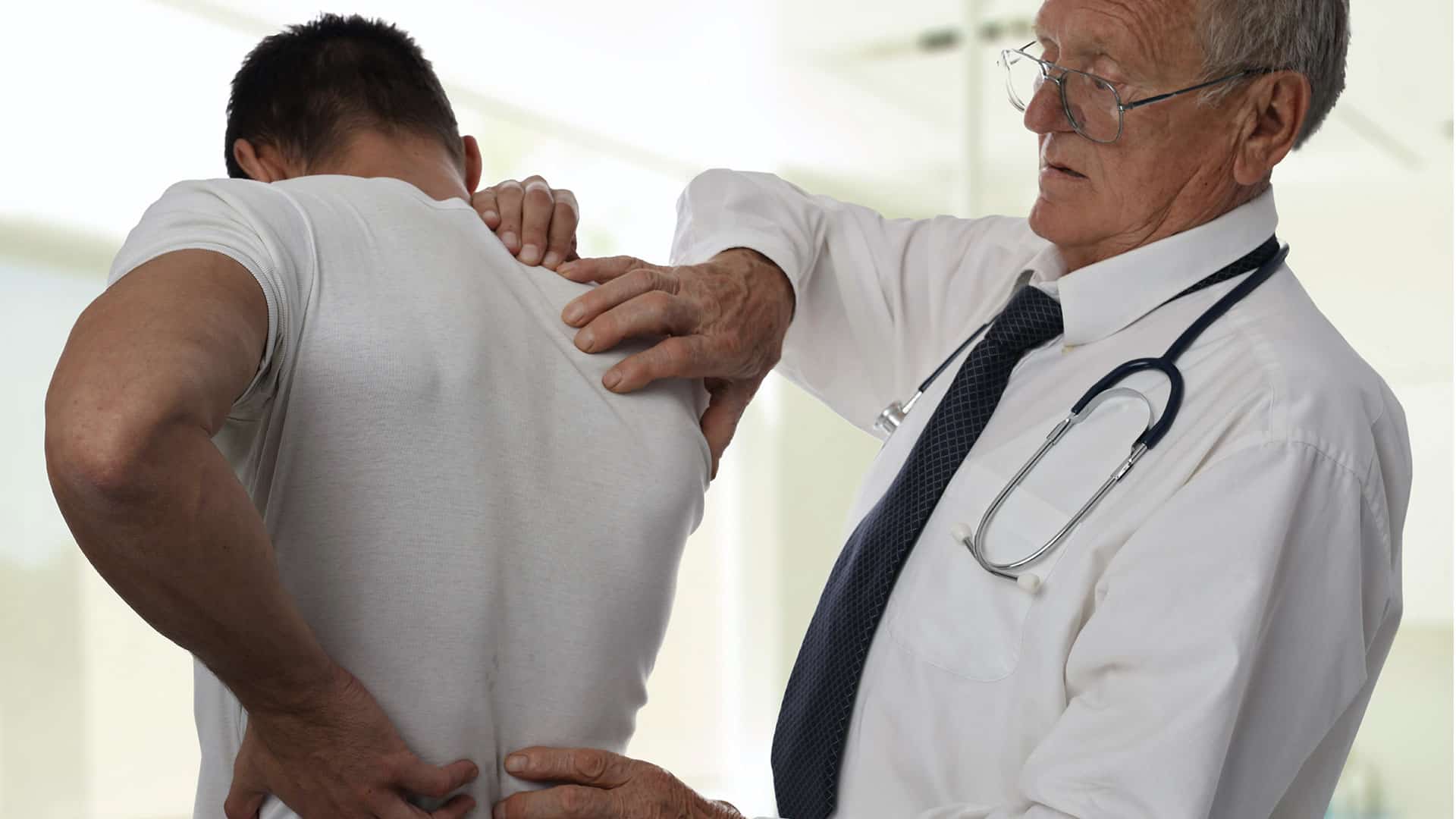Whiplash is a serious neck injury that occurs when trauma-related hyperextension damages your soft tissue. This often happens when rapid movement mimics a whip, causing your neck to quickly snap back and forth. Millions of people develop whiplash each year, yet patients are often surprised when they receive a whiplash diagnosis. Symptoms don't always appear immediately after an injury, so you might assume your neck pain stems from fatigue or overuse. That's why it's wise to have a Chiropractic Adjustment in Lafayette, LA right away if you notice potential signs of a serious neck injury.
We've detailed several of the most common whiplash symptoms below and provided helpful information on how to treat them. Contact us as soon as possible if you recognize any of these issues, even if you don't remember experiencing a recent injury.
Whiplash Symptom #1: Headache

Damage to your neck's delicate tissues often manifests as a headache, and whiplash is no exception. If you notice new headaches, particularly ones that stem from your skull's base, whiplash might be the culprit.
When you have a whiplash-related headache, sometimes physical therapy is able to help relieve the pain. You may also benefit from chiropractic care, laser therapy, or therapeutic injections. Talk to our medical team about simple stretches you can do at home, as these may improve your symptoms when combined with other treatments.
Whiplash Symptom #2: Muscle Spasms in Your Upper Body

Have you ever felt your muscles throb or twitch? Whiplash can cause painful muscle spasms in your upper body, and these don't always resolve quickly. This happens when the soft tissue around your neck becomes tense or swollen after an injury.
Physical therapists can gently stretch your body, which helps reduce cramps from tight muscles. You can also try some stretches at home but check with a medical provider first because some stretches can worsen your symptoms. However, you can check this article to learn more about the benefits of cbd products for you.
Additionally, you may have an electrolyte imbalance or pain from dehydration. Sometimes patients spend so much time resting or icing their upper body that they forget to stay hydrated. Make sure you're drinking plenty of water and give us a call if you're not sure whether you're getting enough fluids. We'll help you figure out whether your muscle spasms stem from whiplash, dehydration, or a combination of the two.
Whiplash Symptom #3: Neck Stiffness

Whiplash doesn't always result in severe pain, which is why some patients are caught off guard by their diagnosis. Let us know if you experience stiffness after an accident or injury, as it may stem from whiplash. You might feel like you can't stretch your neck as easily as you once did or notice feelings of tightness and tension.
Stiffness often occurs when patients have swelling or inflammation in their body. You can treat stiffness at home by alternating an ice pack and heating pad, but that's not always a permanent solution. It's also a good idea to limit screen time, as this may trigger a condition called text neck. This can increase stiffness and make your neck feel worse than it already does.
The remedy for stiffness depends on the severity of your symptoms. Some patients just need ice or heat therapy, while others depend on pain relief from chiropractic care or physical therapy. We may also have you perform some light stretches, such as chin tucks or side bends. These are exercises you can do at our office as well as in your home.
Whiplash Symptom #4: Limited Range of Motion

Many people don't realize how often they use their neck muscles until motion becomes restricted. You may find it hard to turn your head while you reverse your car, or you might experience trouble tilting your head to see a laptop screen or television. These are common complaints from whiplash patients, but luckily our team can help restore your range of motion.
Treatment depends on the cause of your motion restriction. Your whiplash may have caused disc herniation or other serious issues. You may also have swollen muscles or inflamed nerves that make it difficult to move your neck. We'll examine your neck thoroughly during a physical exam and take some imaging tests to get clear answers. Once we know more about your condition, we may recommend physical therapy, chiropractic adjustment, laser therapy, or a combination of treatment options.
Whiplash Symptom #5: Pain in Your Shoulders or Arms

Whiplash is a condition caused by damage to your neck. However, it can also create pain or discomfort in your shoulders or arms. This often occurs when an out-of-whack disc in your neck presses against the nerves that run to your shoulders or arms. You may also notice discomfort in your skull, scalp, or face.
If you have arm or shoulder pain, schedule an exam as soon as possible. You can go to site to see if you can schedule an exam. You may simply have a swollen muscle pressing against your nerves, but if it's a herniated disc, it requires special care. We can perform chiropractic adjustments to get your disc back where it belongs or treat your symptoms with physical therapy.
Whiplash Symptom #6: Dizziness

When a patient visits us with complaints of dizziness or says they feel light-headed, we check their neck right away. Neck issues, including whiplash, can often trigger these sensations. Sometimes dizziness occurs when your body is overwhelmed by the pain. Other times, it happens when your whiplash causes circulation issues. This can occur when muscles are inflamed, or herniated discs disrupt your body's usual flow.
Whiplash can also damage your vestibular system, which includes your brain and inner ear. Your vestibular system is responsible for eye movement, and it also helps your body remain balanced as you walk or move. When your vestibular system becomes damaged, you may experience dizziness or a spinning sensation. This can often be addressed with chiropractic care, but some patients also try physical therapy or acupuncture.
Whiplash Symptom #7: Exhaustion

When you get a bad bout of whiplash, your body works hard to get rid of your pain. As a result, you may feel extra tired, even if you're sleeping often. Whiplash can also cause sleep deprivation if lying down feels too uncomfortable. Some patients find it helpful to roll a small towel under their neck at bedtime or use a special wedge pillow geared toward sleepers with neck pain. You can visit https://observer.com/2020/09/best-cbd-oil-for-sleep/ to access more information about people suffering from insomnia using CBD to sleep better.
Let us know if your neck pain is keeping you up at night. We can perform chiropractic treatments, physical therapy, laser therapy, or acupuncture. If symptoms don't improve much over time, we can also try therapeutic injections and other minimally invasive remedies.
Don't Battle Whiplash Symptoms Alone
When whiplash strikes, some people decide to just wait things out and see how symptoms progress. Unfortunately, that's not always a safe plan and the best option is to receive whiplash treatment. Left untreated, whiplash can cause long-term damage to your cervical region, and in serious cases, the damage can even become permanent. This is true whether your symptoms stem from contact sports, an automobile accident, or a fall-related injury. However, when you need a car accident attorney you can always visit this site to get in contact and ask for advice.
Reach out for help from the compassionate team at Northeast Spine and Sports Medicine if you suspect that whiplash is causing your neck pain. We can assess the root of your symptoms via noninvasive diagnostic tools and help you create a custom treatment plan for pain relief. We offer numerous services for symptom relief, from chiropractic care to physical therapy. We're happy to help whenever you're ready!

